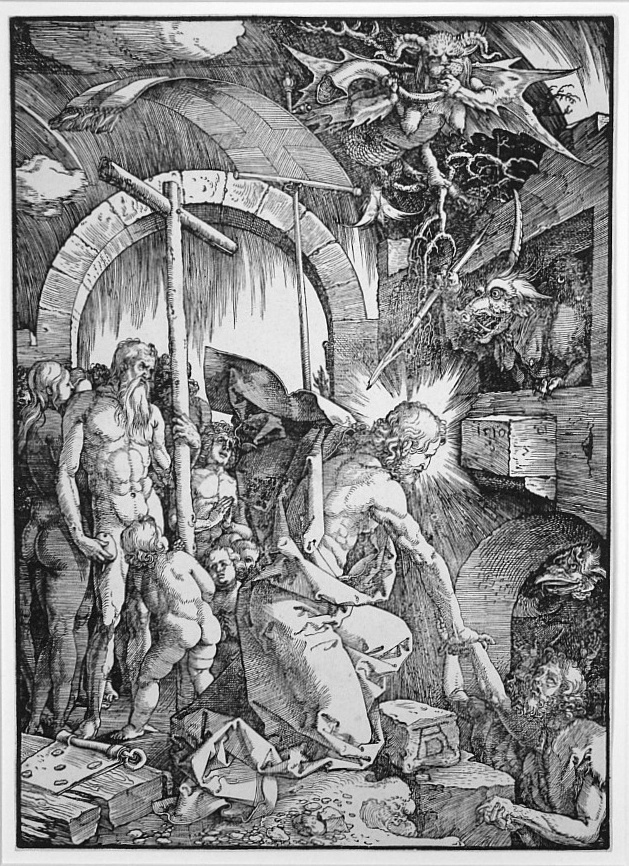Christ in Limbo
Albrecht Durer (1471-1528), Christ in Limbo (Harrowing of Hell), woodcut, 1510, Bartsch 14, an impression just after the 1511 edition of The Large Passion, 15 5/8 x 11 ¼ inches, on old laid paper with a Crest of Augsburg related watermark (cf. Meder 180, Briquet 2110, dated c. 1486-1583; also similar to Augsburg arms, Meder 177). In excellent condition, with borders all around, usual horizontal printer’s crease across center.
An exceptionally well printed impression of this iconic image.
The legend can be found in the Apocryphal text, the Gospel of Nicodemus. After his Resurrection Jesus descended into Hell and led the just, the patriarchs, the prophets of the Old Testament and Adam and Eve, into the light. Later a clarity was introduced that all of them were not in Hell, but in the bordering region, Limbo (from the Latin word limbus, a hem); it was taught that because they lived and died before the Christ’s self-sacrifice for peoples redemption, they were put in the lower place until such time when Jesus could liberate them. The story was later retold in the Golden Legend.
The Christ in Limbo may be the first (of four) of Durer’s woodcuts executed in 1510 to complete the Large Passion series. The earlier 7 prints of the series were made in 1497-1499, and were printed as single sheets up to 1511 when an edition of the series was printed. This helps account for the particularly strong impression of the present print; the block was not nearly as worn by the 1511 printing as the earlier blocks were, and so subsequent printings of these newer blocks are stronger than those for the earlier blocks. The later blocks also tended to represent a more sophisticated approach to woodcutting, and were made by more skilled woodcutters.
